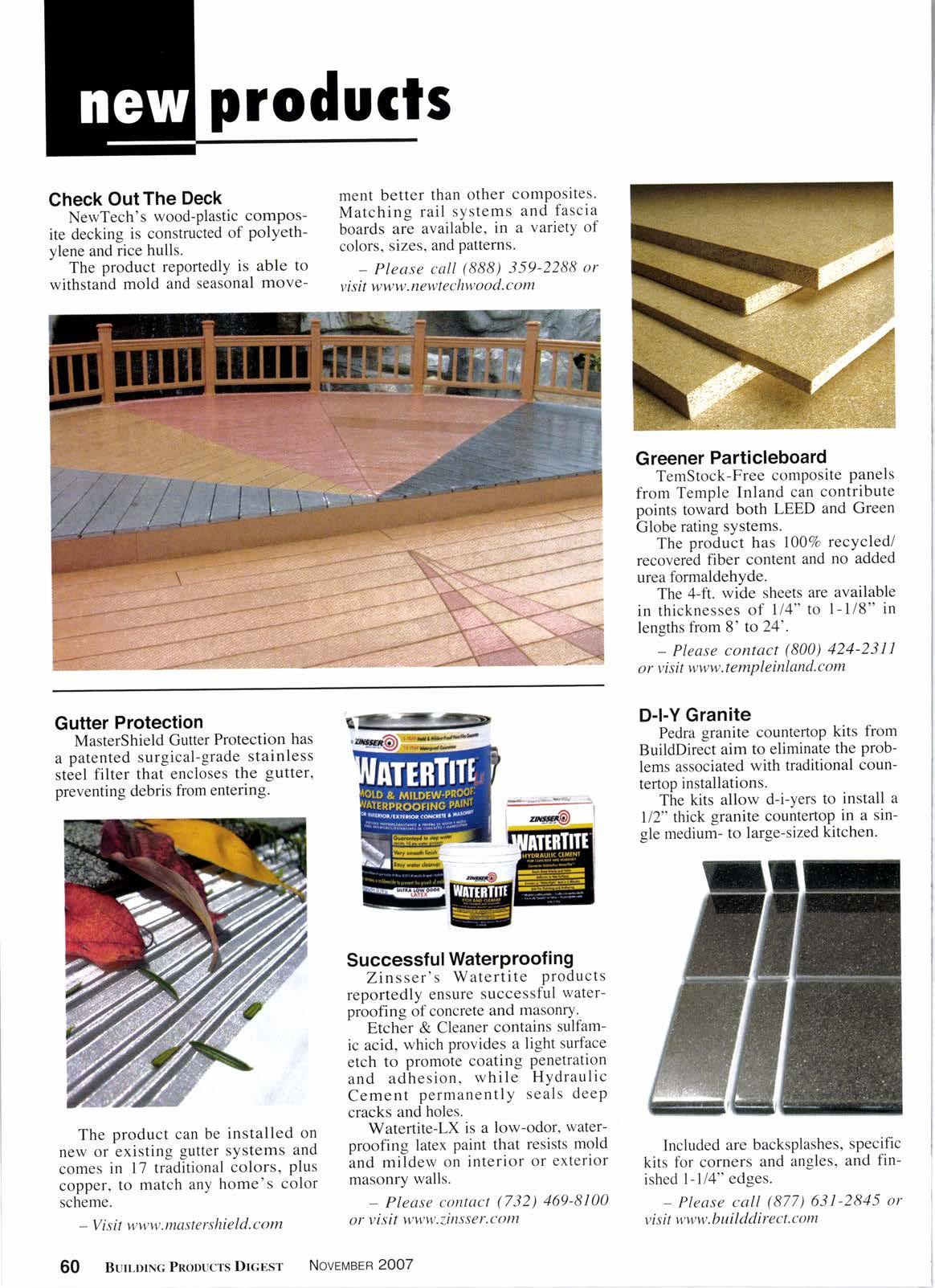
1 minute read
afoot in fencing
stvle. from $635 million in 2006 to over $690 million in 2010.
The growth in demand for ornamental fence is due to upgrade trends at the low end as well as the high end of the market. At the low end, the availability of low price point metal ornamental fence panels from Asia is giving consumers an option to upgrade from chain link to a more aesthetically pleasing ornamental metal fence.
At the premium end of the market, ornamental fence demand benefits from the trend to fancY, decorative metal ornamental fence and entrance gates along the front of large estate homes, and more ornamental fence used as perimeter fence of high-end developments.
vinyl has significant penetration Utah and the Long Island region New York, while its Penetration Texas is negligible.
In addition to vinYl, PolYstYrene, wood-plastic composites, and polyethylene are the other plastic-based fence materials. The studY estimated demand for plastic fence materials in the North American residential market to be over $600 million, ot neatly 25Vo of the total market in 2006.
Privacy fence is the most PoPular type of fence style installed in the residential market, accounting for over 5OVo of the total value. Although it dominates the commerical market, chain link also remains popular for homeowners due to its low cost and effectiveness for securitY' Even though chain link has been losing market share to other fence styles' and it is one of the lowest priced fence styles, it still accounted for over 107o of the total value in 2006.
Chain link fence is forecast to have the largest decrease of all fence styles. In contrast, ornamental fence is forecast to increase more than any other
Plastic fence will continue to grow its market share over the next five years. Most demand growth will be for vinyl and composite privacy fence, as replacements for wood. Plastic fence manufacturers have develoPed new privacy fence products with embossed woodgrain and earthtone colors, as well as low gloss to mimic wood. The new composite fence products have an edge over vinyl in regards to availability of a wide range of darker colors.
Both vinyl and composite suppliers are looking to take advantage of the growing consumer demand for low maintenance, non-shiny, white plastic fence by tapping into the huge portion of the wood privacy market that will not consider white vinyl as an option.
Compared to vinYl Post-and-rail fence, which has successfully penetrated and displaced as much as 507a of wood in manY regional markets, vinyl only has about a 167o share of the North American PrivacY fence market. The large wood privacy market is also a target for the foamed polystyrene and 1007o polyethylenebased fence Products'










